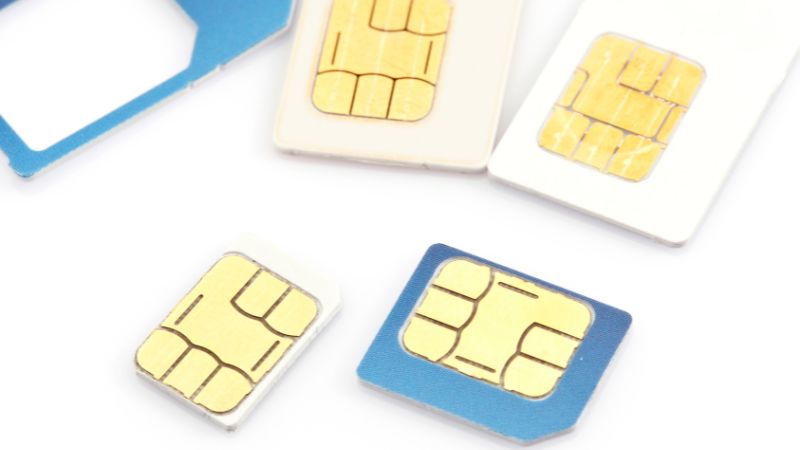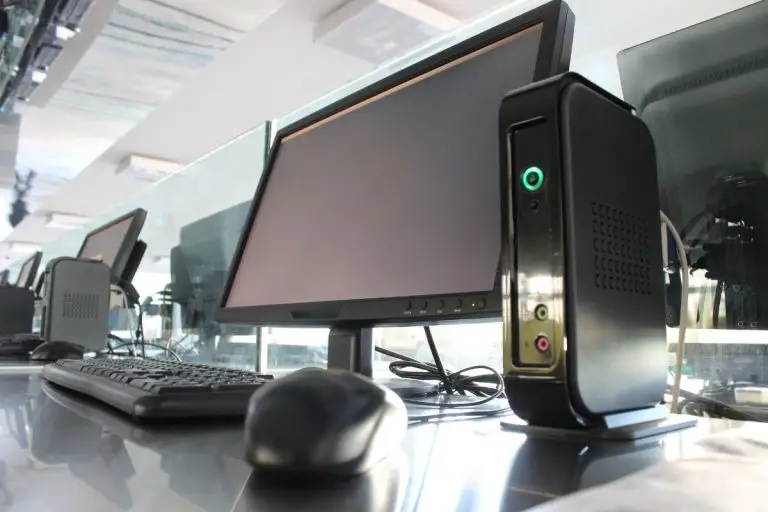SIM Card vs SD Card: What’s the Difference?
If you’re like most people, you probably have a few SD cards and SIM cards lying around your house. But do you know the difference between them? In this blog post, we will discuss the differences between SIM cards and SD cards, as well as when to use each one.
The main difference between an SD card and SIM card is their purpose. An SD card is used to store data, while a SIM card is used to identify the user of a cellular device. SIM cards are also necessary for GSM devices, while SD cards are not.
I will expand a bit on this topic in the rest of this article, so don’t worry if it’s not yet clear enough for you or if you still have additional questions. You’ll understand everything by the end of this post.
Definitions: SD card vs SIM card
An SD card is a small, removable memory card that is used to store data. SD cards are often used in digital cameras and camcorders to store images and videos. They can also be used in some phones and tablets to store music, apps, and other types of data.
Side note: SD stands for “Secure Digital”.
On the other hand, SIM cards, or Subscriber Identity Module cards, are used to identify the user of a cellular device. A SIM card contains information that uniquely identifies the user, such as their phone number and billing information. SIM cards are also necessary for GSM devices, which is a type of cellular network.
How to recognize them?

A SIM card has a rectangular chip in the middle, like the one on a credit card, while an SD card has just a few connectors on one side.
A SIM card while also generally have the logo of your mobile network operator on it, while an SD card generally has the brand, model and disk capacity mentioned on it. Common brands for SD cards are SanDisk, Kingston, Samsung and Lexar. Check the product listing on Amazon to get a few examples.
Even if they look similar, SD card and SIM cards have different dimensions, so that you can’t go wrong in theory. I’ll talk about this a bit later.
When to use each one?
If you’re trying to store data, an SD card is what you need. This could be anything from photos and videos to music and apps. SIM cards, on the other hand, are used to identify the user of a cellular device.
An SD card can range in capacity from 512 MB to 1 TB. Here is my favorite model.
A SIM card will be way more limited, and can generally store up to 250 contacts and 500 KB of data, not much.
Related article: What’s the difference between MB and KB?
History of SD cards and SIM cards
SD cards were first introduced in 1999. They were developed by SanDisk, Panasonic, and Toshiba as a way to store data in a more portable format.
SD cards have come a long way since their inception in 1999. Today, they are an essential component in many electronic devices, including digital cameras, camcorders, smartphones, and tablets. SD cards come in a variety of sizes and capacities, ranging from 512 MB to 1 TB.
SIM cards were first introduced in 1991. They were developed by Giesecke & Devrient as a way to identify the user of a cellular device.
Nowadays, SIM cards are used in everything from smartphones to tablets to laptops. You’ll get a new one each one you switch to a new operator.
Types of SD cards and SIM cards

There are three main formats of SD cards:
- SD (32 mm x 24 mm): The largest card, typically the slot size you have in your computer.
- Mini SD (21.5 mm x 20 mm): An old format, has been replaced by Micro SD and are no longer produced.
- Micro SD (15 mm x 10 mm): Typically the small format you’ll find in smartphones.
SIM cards come in two main types:
- Mini SIM (25 mm x 15 mm): Named “Mini” but it’s the biggest format. No longer used in phones, but you can still find it in machines. Size:
- Micro SIM (15 mm x 12 mm): Was the standard for smartphones a few years ago, still used in tablets and routers.
- Nano SIM (12.3 mm x 8.8 mm): The most common SIM card format in recent smartphones.

So Nano SIM and Micro SD are the most common, and they almost do the same size, which explain the confusion about the difference between an SD card and a SIM card.
Main differences between SD card and SIM card
In short, the main difference between SD cards and SIM cards is that they don’t have the same purpose: SD cards store data while SIM cards provide mobile network access. They also don’t have the exact same format.
| SIM Card | SD card | |
|---|---|---|
| Goal | Access mobile network | Store data (photos etc.) |
| Memory size | Very small, less than 500 KB in general. | Bigger, up to 1 TB for the recent models. |
| Formats | Nano SIM is the most common currently. But you can still find Mini and Micro SIM in some devices. | SD, Mini SD and Micro SD. |
| Creation date | 1991 | 1999 |
FAQ
Can you put a SIM card in a micro SD card slot?
You can’t put a SIM card in a micro SD card slot. A SIM card is a completely different format from an SD card. They are not compatible with each other.
Do I need an SD card in my phone?
Some phones have a built-in memory and don’t need an SD card, while other phones have limited internal memory and require an SD card to store additional data such as music, videos, or large files.
How do I know if my phone uses a SIM card or an SD card?
The best way to find out is to consult your phone’s user manual. You can also try inserting a SIM card or SD card into your phone to see if it fits. If you’re still not sure, you can contact your carrier or the manufacturer of your phone for more information.






